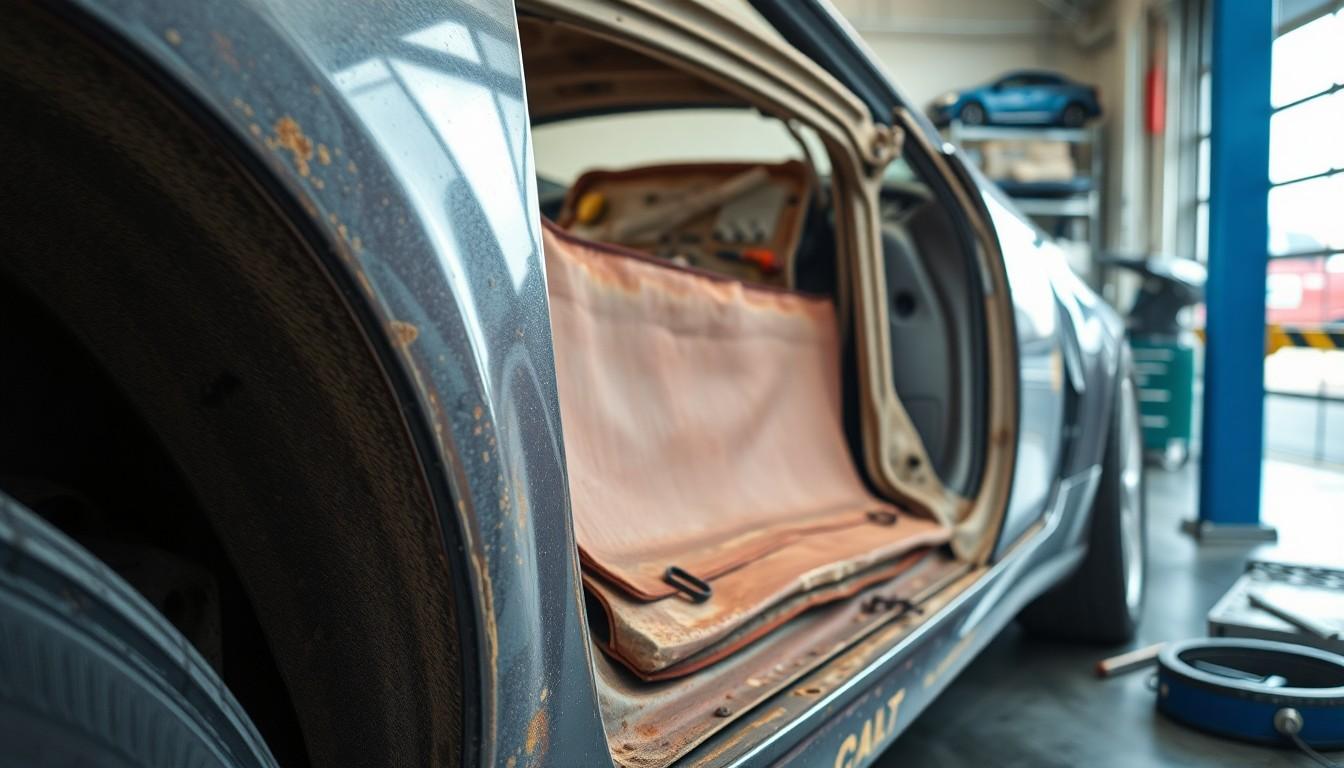Structural damage to a car is something every vehicle owner dreads. When we hear this term, it often signals important problems that go beyond simple cosmetic issues. Unlike minor dents or scratches, structural damage affects the core components that maintain your vehicle’s integrity and safety.
We’ve seen countless cases where hidden structural damage led to thousands in repair costs and compromised safety. The frame, unibody, crumple zones, and pillars are critical elements that absorb impact forces during collisions to protect passengers. When these components are compromised, your car’s ability to safeguard you is severely diminished.
Ready to learn how to identify structural damage and understand what it means for your vehicle’s value and safety? Let’s jump into everything you need to know about this critical aspect of vehicle maintenance and inspection.
What Is Structural Damage to a Car?
Structural damage refers to harm affecting a vehicle’s essential framework components that maintain its integrity and safety. These critical elements include the frame, chassis, unibody, crumple zones, and other load-bearing parts designed to protect occupants during a collision. Any compromise to these fundamental structures potentially alters the car’s ability to withstand impact forces and properly distribute them throughout the vehicle.
Most modern vehicles use unibody construction where the frame and body form a single integrated unit rather than having a separate frame. This design offers excellent crash protection when intact but becomes particularly vulnerable when damaged. Structural components work together as a system—damage to one area can affect the entire vehicle’s safety performance and handling characteristics.
Cars with structural damage may exhibit noticeable symptoms like uneven tire wear, misaligned doors, unusual noises when driving, or visible rust in critical areas. These indicators often suggest deeper issues affecting the vehicle’s core integrity that go beyond what’s immediately visible. Technicians use specialized equipment including frame measuring systems and laser alignment tools to detect structural misalignments that might escape visual inspection.
Insurance companies categorize structural damage separately from cosmetic damage due to its direct impact on vehicle safety. Even seemingly minor accidents can cause frame damage when impact forces exceed the design parameters of structural components. This distinction matters significantly for insurance claims, vehicle valuations, and disclosure requirements when selling a previously damaged vehicle.
Types of Structural Damage in Vehicles
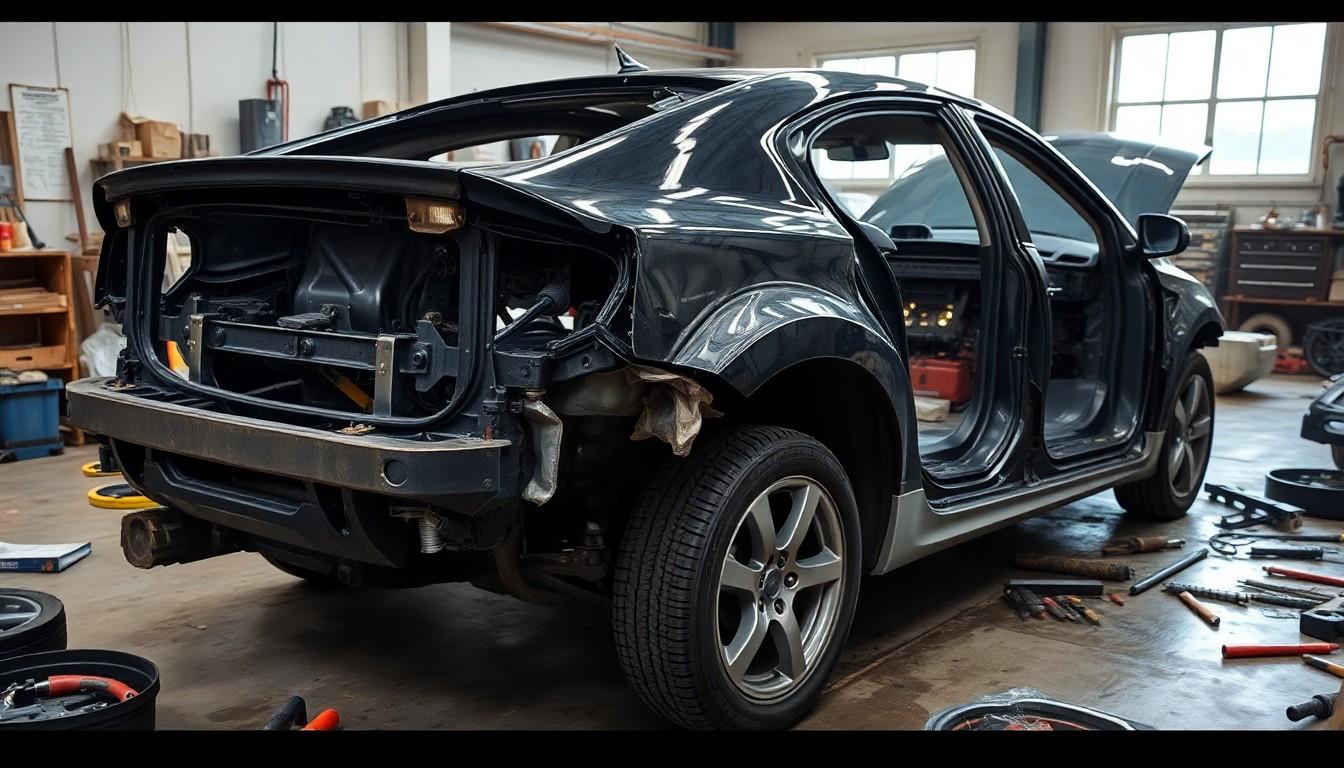
Structural damage in vehicles comes in several forms, each affecting different components of the car’s framework. These types of damage can significantly compromise a vehicle’s safety, performance, and value.
Frame Damage
Frame damage impacts the vehicle’s frame rails, which serve as the backbone of the car’s structure. These critical components provide stability and crucial protection during crashes. Damage to frame rails often results from severe collisions and can be difficult to repair properly. When frame damage is extensive, it may lead to a total structural loss, as the compromised frame can no longer guarantee the same level of safety as before the accident.
Unibody Damage
Unibody damage affects modern vehicles that use an integrated construction where the body and frame form a single unit. This type of structural damage typically occurs during important accidents and presents unique repair challenges. Even after professional repairs, vehicles with previous unibody damage may still have residual structural issues affecting their integrity. Unibody repairs require specialized equipment and expertise to ensure proper realignment of the integrated structure.
Pillar and Support Damage
Pillar and support damage involves essential structural elements that maintain the vehicle’s integrity during normal operation and collisions.
Crumple zones, designed at the front and rear of vehicles, absorb impact energy during collisions. Damage to these engineered areas reduces the car’s ability to protect occupants in future accidents by compromising their energy-dissipating function.
Subframes, located underneath the vehicle and bolted to the main frame, provide mounting points for suspension components. Damage to the subframe often leads to alignment issues, abnormal handling characteristics, and uneven tire wear patterns. Cars with subframe damage may pull to one side during driving or exhibit unusual noises when traveling over bumps.
Common Causes of Structural Damage

Structural damage to vehicles stems from various sources that compromise the integrity of essential framework components. Understanding these causes helps car owners recognize potential risks and take preventive measures when possible.
Accidents and Collisions
Collisions represent the primary cause of structural damage to vehicles, with even minor impacts potentially causing important harm to crucial components. Severe accidents frequently result in frame damage, affecting the vehicle’s backbone and altering its structural integrity and alignment. The force of impact during collisions commonly leads to bent or broken axles, which prevents the car from driving straight and creates dangerous handling conditions. Damaged crumple zones—areas specifically designed to absorb and redistribute impact—become compromised after an accident, reducing the car’s ability to protect occupants in subsequent collisions.
Environmental Factors
Environmental elements contribute significantly to structural damage through prolonged exposure or sudden catastrophic events. Flooding stands out as a major environmental risk, with water damage weakening structural components, particularly when water reaches electrical and mechanical systems beneath the vehicle. Extreme weather conditions such as hurricanes and tornadoes generate debris and high winds capable of causing immediate and severe structural impacts to parked vehicles. Corrosion and rust formation, though developing more gradually than collision damage, steadily deteriorate a vehicle’s frame and chassis over time, undermining structural integrity and creating safety hazards. Salt exposure in coastal areas or regions using road salt during winter accelerates this corrosion process, making regular inspections essential for vehicles in these environments.
How to Identify Structural Damage
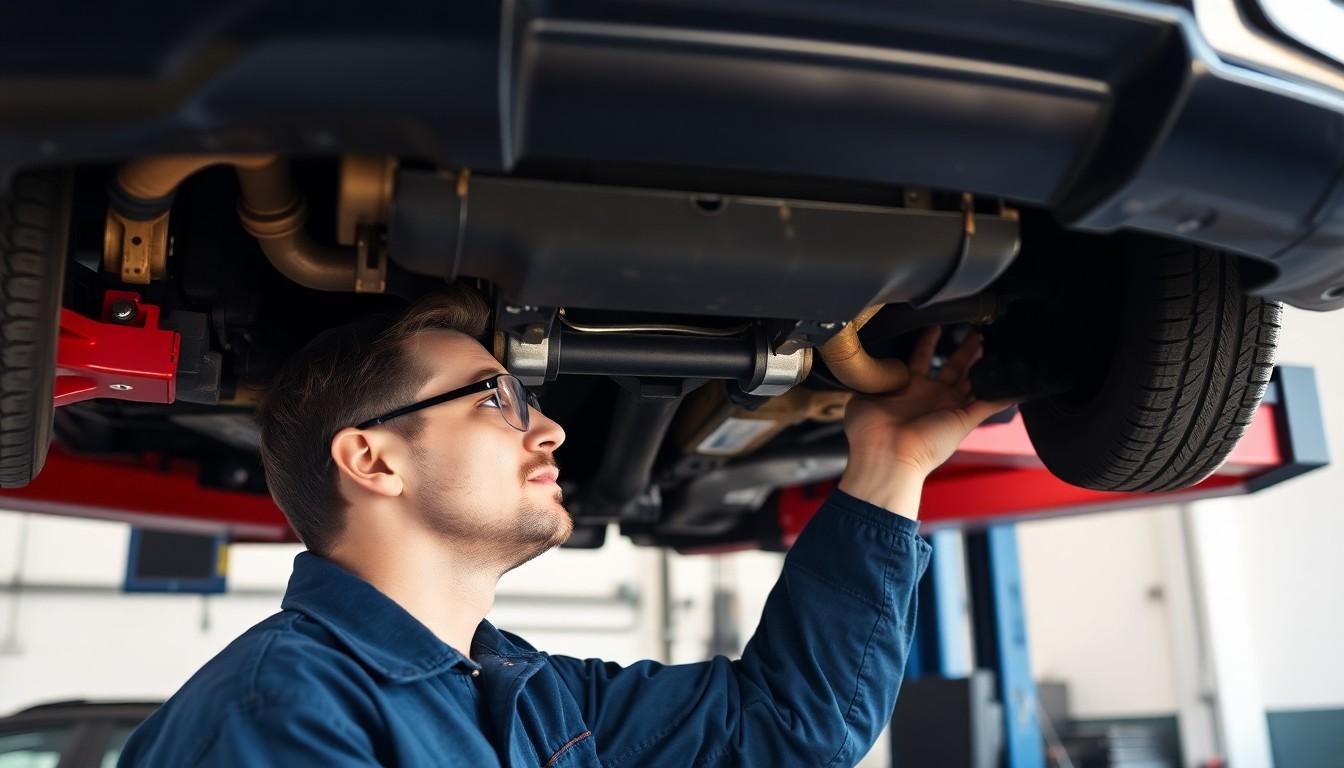
Identifying structural damage requires both visual inspection and professional assessment techniques to accurately determine the extent of the issue. Structural problems often lurk beneath the surface, making them challenging for the average car owner to detect without proper knowledge and tools.
Visual Inspection Signs
Visual indicators of structural damage are often subtle but recognizable once you know what to look for. Uneven gaps between body panels serve as telltale signs that the underlying structure has shifted or been compromised. Doors and windows that fail to align properly or don’t close with ease indicate potential frame issues affecting the vehicle’s overall integrity. Visible bends, twists, or crumples in the frame components represent clear evidence of structural damage that requires immediate attention. Cars with structural issues typically exhibit alignment problems, such as pulling to one side while driving on a straight road. Uneven tire wear patterns also signal potential frame damage, as the vehicle’s weight distribution becomes compromised following structural alterations.
Professional Assessment Methods
Professional evaluation offers the most reliable way to identify and assess structural damage comprehensively. Mechanical inspections conducted by qualified technicians can reveal issues with the frame, chassis, and other critical structural components that aren’t visible to untrained eyes. Alignment checks performed on specialized equipment precisely measure whether the vehicle’s suspension and steering systems have been affected by structural damage. Body shop specialists at certified centers like CARSTAR possess the expertise to perform detailed inspections that uncover hidden structural problems. Advanced diagnostic tools, including frame measuring systems and laser alignment equipment, detect even minor misalignments in the vehicle’s structure with precision that visual inspections can’t match. These professional assessments provide valuable documentation about the vehicle’s condition, which proves essential for insurance claims, resale considerations, and safety evaluations.
Impact of Structural Damage on Vehicle Safety
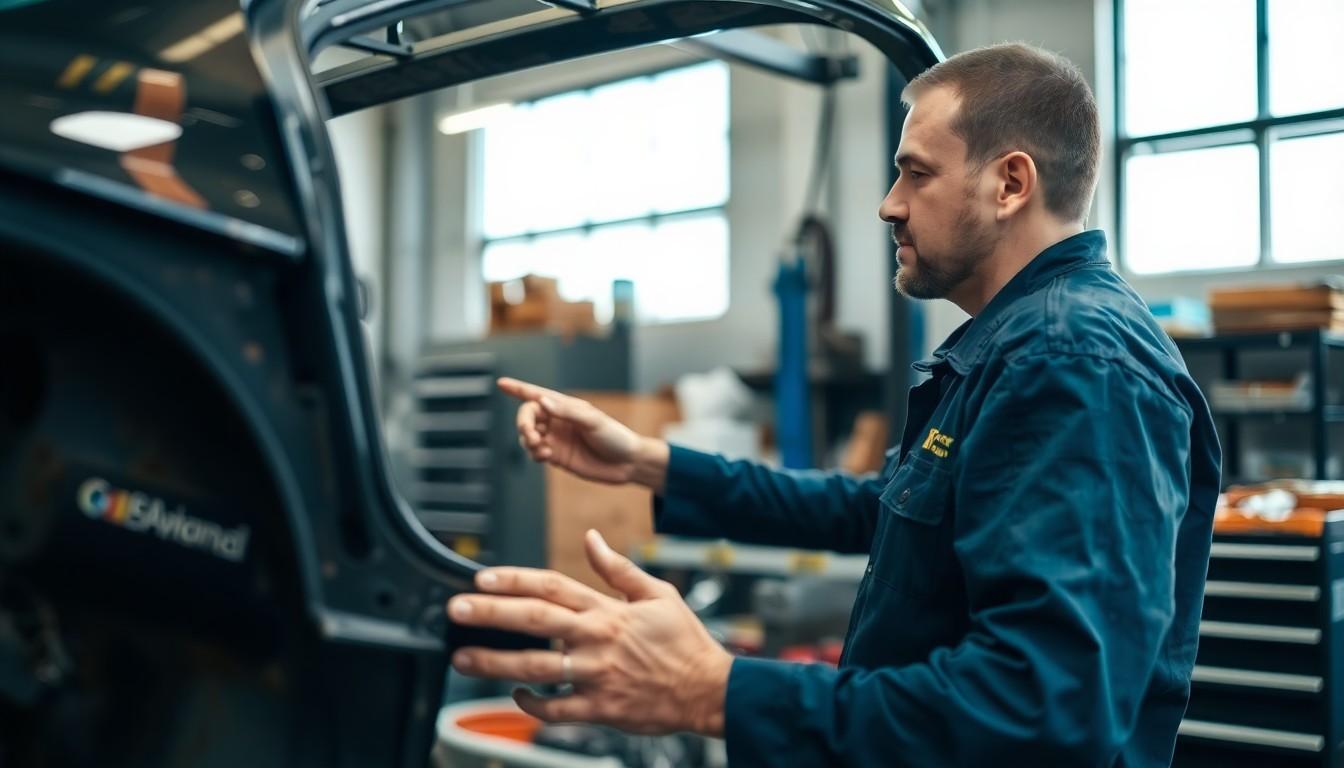
Structural damage significantly compromises a vehicle’s safety systems and overall performance. When a car’s frame or chassis is damaged, critical safety features can’t function as designed, putting occupants at serious risk. A compromised frame often leads to misalignment of airbags and crumple zones, reducing their effectiveness during subsequent collisions.
Mechanical issues frequently arise from structural damage as the misaligned frame puts excessive stress on other components. These stresses cause premature wear on suspension parts, steering components, and drivetrain elements, resulting in unpredictable handling characteristics and decreased performance on the road.
Crumple zones lose their protective capabilities once they’ve been damaged in a collision. These specialized areas are engineered to absorb and redistribute impact forces, but structural damage prevents them from performing this crucial function in future accidents, substantially increasing injury risks for passengers.
Driving safety decreases dramatically in vehicles with structural damage. The compromised stability creates hazardous conditions where the car may respond inconsistently to driver inputs, especially during emergency maneuvers or adverse weather conditions.
Hidden structural problems present perhaps the greatest danger to unsuspecting drivers. Unlike cosmetic damage that’s immediately visible, frame and chassis issues often lurk beneath the surface without obvious external signs, making thorough inspections after any collision absolutely essential for ensuring continued vehicle safety.
Repair Options for Structurally Damaged Cars
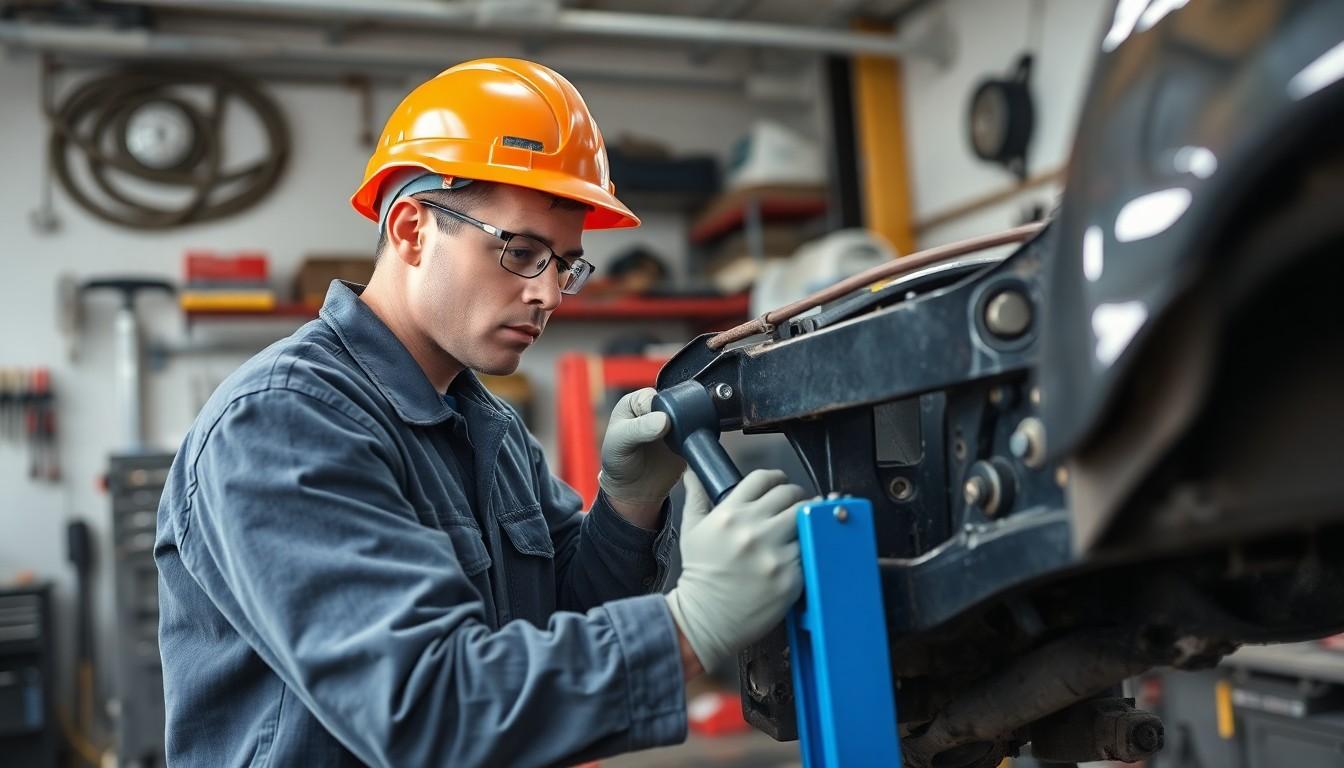
Structural damage repairs involve complex processes that aim to restore a vehicle’s integrity, though they can’t completely erase the damage history. Understanding available repair methods and their limitations helps car owners make informed decisions about their damaged vehicles.
When Repairs Are Possible
Structural repairs are feasible in many situations but come with important considerations for vehicle owners. Technicians typically use two primary methods to address frame damage: realignment or replacement with welding. Realignment involves pulling bent metal components back to their original position, which can restore proper dimensions but doesn’t completely recover the structure’s original strength. The metal weakens after being bent and straightened, creating potential vulnerability in future impacts. Component replacement offers another option where damaged sections are cut out and new pieces are welded in place. This creates a heat affected zone (HAZ) at weld points that may lack the original factory specifications for strength. Even after professional repairs that return the vehicle to correct measurements, the car will retain a structural damage history that significantly reduces its market value.
When a Car Is Considered Totaled
Insurance companies declare a vehicle “totaled” when repair costs plus salvage value exceed the car’s fair market value before the damage occurred. This decision resembles a balancing act where excessive repair expenses tip the scale toward a total loss determination. The insurance adjuster evaluates multiple factors including the extent of structural damage, repair costs, parts availability, and the vehicle’s pre-accident value. Modern vehicles with complex unibody designs and advanced safety features often reach the total loss threshold more quickly than older models. Cars with important frame rail damage, compromised crumple zones, or multiple structural component failures typically fall into this category. When an insurance company declares a vehicle totaled, owners typically receive a settlement based on the car’s actual cash value rather than funding the extensive repairs required to restore structural integrity.
How Structural Damage Affects Car Value
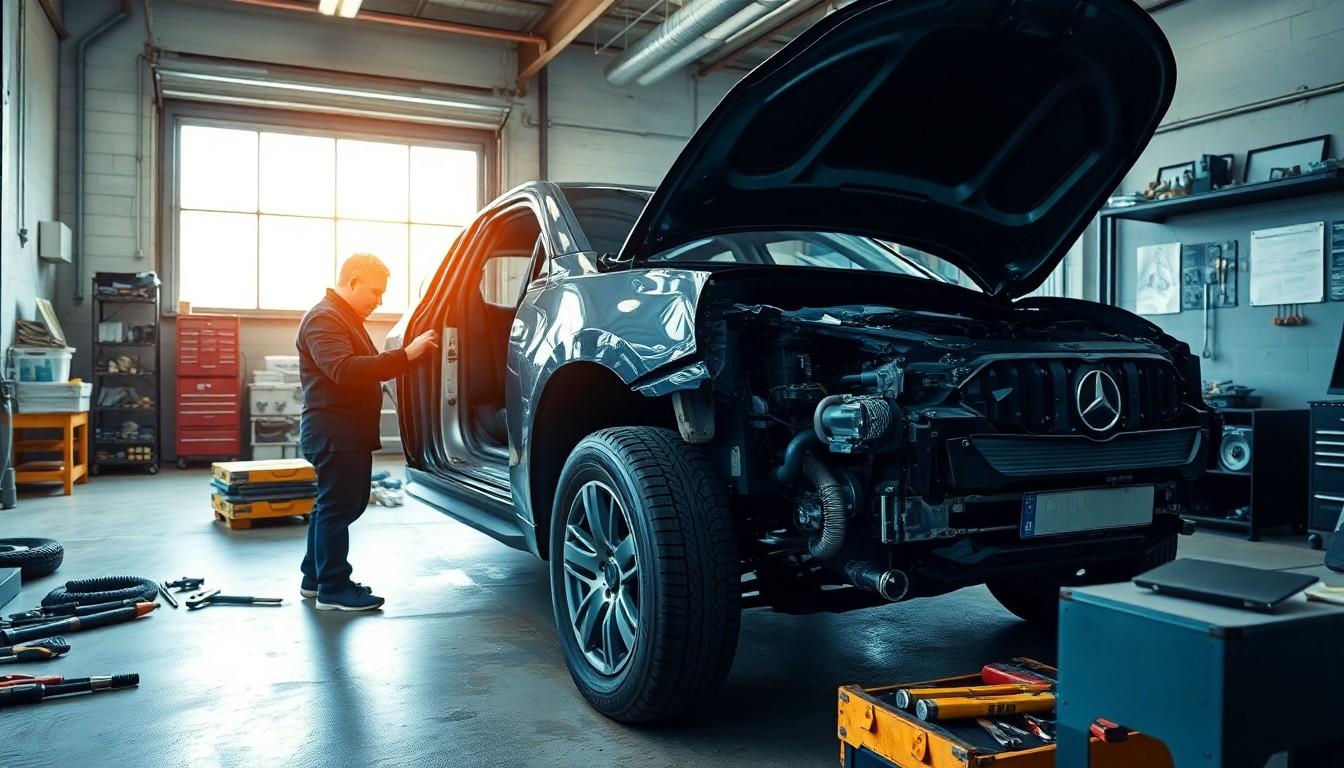
Structural damage creates a important negative impact on your car’s market value due to several critical factors. Safety concerns rank among the top reasons buyers avoid structurally compromised vehicles, as damage to the frame or chassis fundamentally undermines the car’s ability to protect occupants during collisions.
Performance issues inevitably follow structural damage, manifesting as irregular tire wear, uneven panel gaps, and misaligned doors. These functional problems not only affect driving dynamics but also serve as red flags to potential buyers evaluating the vehicle’s condition.
Repair costs for structural damage typically run into thousands of dollars, requiring specialized equipment and expertise that goes far beyond standard bodywork. Many buyers calculate these potential repair expenses when determining their offer price, significantly reducing what they’re willing to pay.
Insurance companies and professional appraisers use a severity scale ranging from 0 to 1.00 when assessing structural damage, with 1.00 representing catastrophic structural failure. This quantitative evaluation directly correlates to value depreciation—even minor structural issues scoring 0.20-0.30 can reduce a vehicle’s value by 20-30%.
Documentation of structural damage in vehicle history reports creates a permanent record that follows the car throughout its lifetime. This history remains accessible to all future buyers, continuing to affect resale value even years after professional repairs have been completed.
Buying a Car with Previous Structural Damage
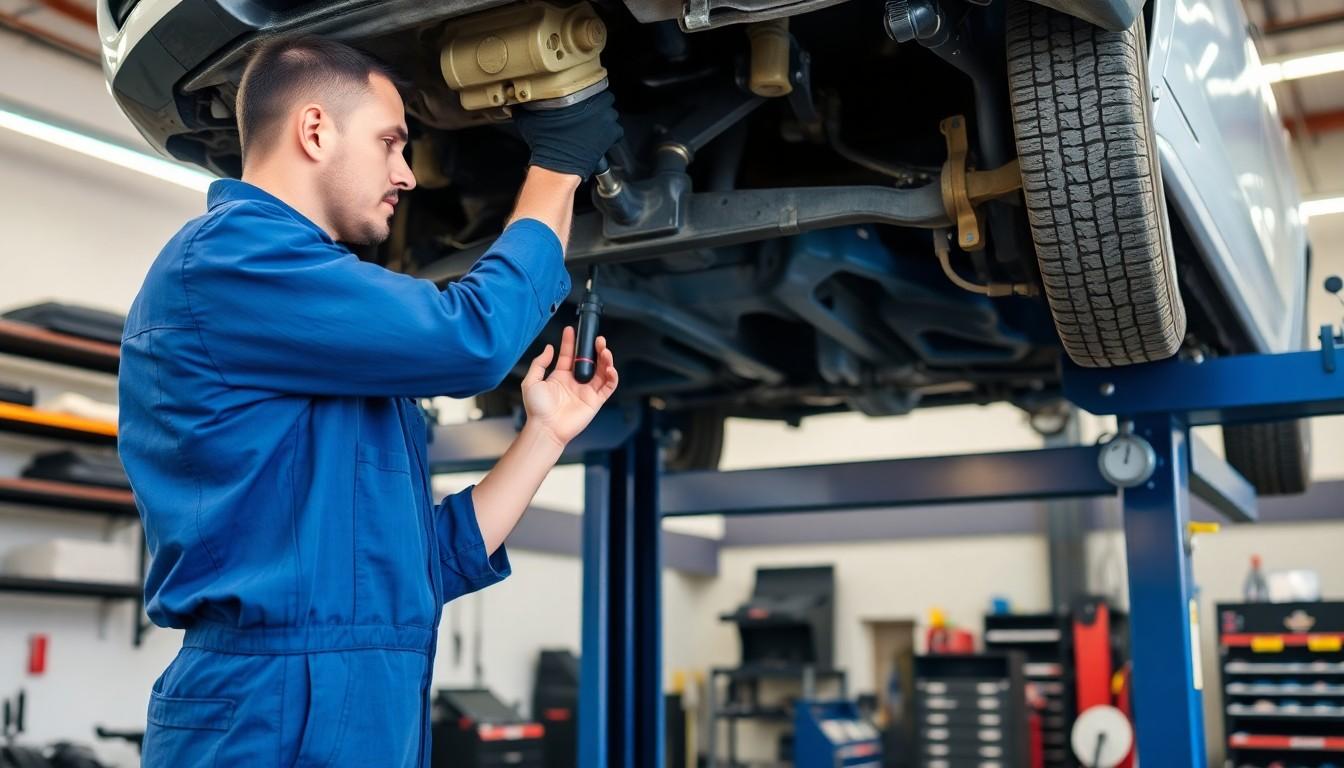
Purchasing a car with previous structural damage presents important risks that extend beyond mere cosmetic concerns. Safety issues top the list of concerns, as structural damage compromises the vehicle’s fundamental protective capabilities, making it potentially hazardous to drive even when the car appears in good condition. Multiple studies confirm that vehicles with repaired structural damage don’t perform as well in subsequent collisions compared to undamaged vehicles.
Mechanical complications frequently accompany structural damage, affecting critical components like suspension systems and wheel alignment. These issues manifest as irregular tire wear, poor handling characteristics, and decreased overall performance. A car’s frame serves as the foundation for all mechanical components, and any compromise to this structure negatively impacts how these parts function together.
Financial implications can’t be overlooked when considering a structurally damaged vehicle. Cars with documented structural damage typically lose 30-50% of their market value compared to equivalent undamaged models. This severe depreciation occurs because the vehicle is considered a “total structural loss” in cases of extensive damage, significantly reducing its resale potential and functional lifespan.
Hidden damage represents perhaps the most troubling aspect of buying a previously damaged car. Structural issues often lurk beneath seemingly perfect exteriors, creating potential safety hazards that aren’t immediately apparent. Professional mechanics report that many structural problems only become evident after thousands of miles of driving, when stress on compromised components leads to premature failures.
Before purchasing any used vehicle, arranging a comprehensive inspection by a qualified mechanic is essential. Professional evaluations include frame analysis, alignment checks, and examination of crumple zones and subframe components. These inspections often reveal damage history that might otherwise remain undisclosed, providing crucial information for making an informed purchase decision.
Conclusion
Structural damage goes beyond superficial issues and threatens your vehicle’s integrity and safety. Understanding the signs of frame damage equips you with knowledge to make informed decisions about repairs or replacement.
Whether from collisions or environmental factors these issues significantly impact vehicle performance market value and most importantly safety. A compromised structure means compromised protection in accidents.
Remember that professional inspections are essential for detecting hidden damage. While repairs may restore functionality they can’t erase the vehicle’s history or fully return it to factory specifications.
We’ve seen how structural issues can reduce a car’s value by 30-50% and create ongoing mechanical complications. When purchasing used vehicles thorough inspections are your best defense against inheriting someone else’s structural problems.
Frequently Asked Questions
What exactly is structural damage in a vehicle?
Structural damage refers to harm affecting a vehicle’s essential framework components, including the frame, chassis, unibody, and crumple zones. These elements are crucial for protecting occupants during a collision. Unlike cosmetic damage, structural issues compromise the vehicle’s integrity and safety performance, which is why insurance companies categorize them separately.
How can I identify if my car has structural damage?
Look for visual clues like uneven gaps between body panels, misaligned doors or windows, uneven tire wear, and visible frame bends. You might also notice handling problems, unusual noises when driving, or doors that don’t close properly. For a definitive assessment, professional evaluations using specialized equipment like frame measuring tools and laser alignment systems are recommended.
What causes structural damage to vehicles?
The primary causes are accidents and collisions, even minor impacts can damage crucial components. Environmental factors like flooding and extreme weather conditions also contribute significantly. Prolonged exposure to elements can lead to corrosion and rust that undermine a vehicle’s frame and chassis over time. Regular inspections are important, especially for vehicles in areas prone to environmental risks.
Can a car with structural damage be safely repaired?
While repairs can restore a vehicle’s integrity to an acceptable level, they cannot completely erase the damage history. Two primary repair methods exist: realignment and component replacement. However, both have limitations regarding restoring the vehicle’s original strength. Even after professional repairs, the car may never regain its pre-accident structural integrity and safety performance.
How does structural damage affect a car’s value?
Structural damage significantly decreases a vehicle’s market value, typically by 30-50%. This depreciation occurs because of safety concerns, potential performance issues, anticipated repair costs, and permanent documentation in vehicle history reports. Even after repairs, the damage history continues to impact resale value, making such vehicles less attractive to potential buyers.
When is a structurally damaged car considered totaled?
Insurance companies declare a vehicle totaled when repair costs exceed a certain percentage of the car’s fair market value (typically 70-80%). This calculation includes not just repair expenses but also diminished value after repairs. Salvage thresholds vary by state and insurance company policies, so the same damage might result in different outcomes depending on location and insurer.
What risks come with buying a car with previous structural damage?
Purchasing a structurally damaged vehicle involves significant risks: compromised safety in future collisions, ongoing mechanical complications affecting handling and performance, substantial financial depreciation limiting resale potential, and possibly hidden damage that may not be immediately apparent. Always arrange a comprehensive inspection by a qualified mechanic before buying any used vehicle.
How do insurance companies handle claims for structural damage?
Insurance companies assess structural damage using a severity scale, which affects both coverage decisions and premium rates. They typically categorize structural damage separately from cosmetic issues due to its direct impact on safety. This classification is significant for claim payouts, vehicle valuations, and subsequent insurance costs. Always disclose structural damage when applying for insurance to avoid policy complications.

